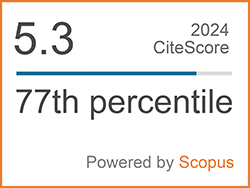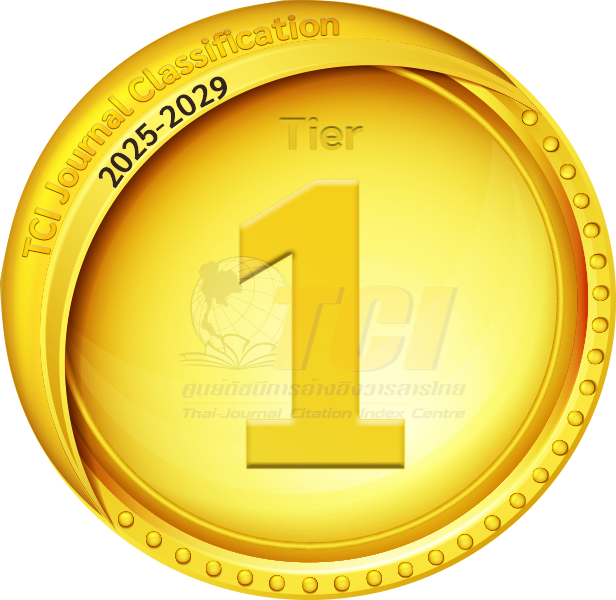Sustainable Development: Toward Net Zero and Carbon Neutrality
Abstract
[1] L. Chen, G. Msigwa, M. Yang, A. I. Osman, S. Fawzy, and D. W. Rooney, “Strategies to achieve a carbon neutral society: A review,” Environmental Chemistry Letters, vol. 20, pp. 2277–2310, 2022, doi: 10.1007/s10311-022-01435-8.
[2] S. Fankhauser, S. M. Smith, M. Allen, K. Axelsson, T. Hale, C. Hepburn, J. M. Kendall, R. Khosla, J. Lezaun, E. M. Larson, M. Obersteiner, L. Rajamani, R. Rickaby, N. Seddon, and T. Wetzer, “The meaning of net zero and how to get it right,” Nature Climate Change, vol. 12, pp. 15–21, 2022, doi: 10.1038/s41558-021-01245-w.
[3] J. Rogelj, O. Geden, A. Cowie, and A. Reisinger, “Three ways to improve net-zero emissions targets,” Nature, vol. 591 pp. 365–368, 2021, doi: 10.1038/d41586-021-00662-3.
[4] Masson-Delmotte, P. Zhai, H.-O. Pörtner, D. Roberts, J. Skea, P. R. Shukla, A. Pirani, W. Moufouma-Okia, C. Péan, R. Pidcock, S. Connors, J. B. R. Matthews, Y. Chen, X. Zhou, M. I. Gomis, E. Lonnoy, T. Maycock, M. Tignor, and T. Waterfield, in Global Warming of 1.5 °C, An IPCC Special Report on the Impacts of Global Warming of 1.5 °C above Pre-Industrial Levels and Related Global Greenhouse Gas Emission Pathways, in the Context of Strengthening the Global Response to the Threat of Climate Change, Sustainable Development, and Efforts to Eradicate Poverty, Geneva, Switzerland: Intergovernmental Panel on Climate Change (IPCC), 2018.
[5] United Nations, “United Nations framework convention on climate change,” GE.05-62220 (E) 200705, 1992.
[6] J. Houghton. “Global warming: A Global Emergency.” cis.org.uk. https://www.cis.org.uk/ ireland/global-warming-2008/J-Houghton-16-Feb-2008.pdf (accessed Nov. 18, 2024).
[7] United Nations Framework Convention on Climate Change (UNFCCC), “Kyoto Protocol to the United Nations Framework Convention on Climate Change,” in Kyoto Climate Change Conference, 1997.
[8] A. J. Hoffman, “Climate change strategy: The business logic behind voluntary greenhouse gas reductions,” California Management Review, vol. 47, no. 3, pp. 21–46, 2005, doi: 10.2307/41166305.
[9] P. Ceppi. “The Carbon Trust three stage approach to developing a robust offsetting strategy.” sustainabilityexchange.ac.uk. https://www. sustainabilityexchange.ac.uk/files/ct_offset_strategies.pdf (accessed Nov. 18, 2024).
[10] Carbon Trust, Defra, British Standards. “Specification for the assessment of the life cycle greenhouse gas emissions of goods and services.” carbonconstruct.com. http://www.carbonconstruct .com/pdf/pas_2050.pdf (accessed Nov. 18, 2024).
[11] R. Falkner, “The Paris Agreement and the new logic of international climate politics,” International Affairs, vol. 92, pp. 1107–1125, 2016, doi: 10.1111/1468-2346.12708.
[12] World Resources Institute and World Business Council for Sustainable Development. “A Corporate Accounting and Reporting Standard.” ghgprotocol.org. https://ghgprotocol.org/sites/default/ files/standards/ghg-protocol-revised.pdf (accessed Nov. 18, 2024).
[13] S. Teske, Achieving the Paris Climate Agreement Goals, 2nd ed. Switzerland: Springer, 2022, doi: 10.1007/978-3-030-99177-7.
[14] International Energy Agency. “Net Zero by 2050: A roadmap for the global energy sector.” iea.org. https://www.iea.org/reports/net-zero-by-2050 (accessed Nov. 18, 2024).
[15] N. Topping, G. Munoz, Boston Consulting Group, and K. Schwab. “Net-Zero Challenge: The supply chain opportunity.” weforum.org. https://www3.weforum.org/docs/WEF_Net_Zero_Challenge_The_Supply_Chain_Opportunity_2021.pdf (accessed Nov. 18, 2024).
[16] International Labour Organization. “Working on a Warmer Planet: The impact of heat stress on labour productivity and decent work.” ilo.org. https://www.ilo.org/sites/default/files/wcmsp5/groups/public/%40dgreports/%40dcomm/%40publ/documents/publication/wcms_711919.pdf (accessed Nov. 18, 2024).
[17] International Labour Organization. “World Employment and Social Outlook 2018: Greening with Jobs.” ilo.org. https://www.ilo.org/sites/ default/files/wcmsp5/groups/public/%40dgreports/%40dcomm/%40publ/documents/publication/wcms_628654.pdf (accessed Nov. 18, 2024).
[18] C. Bellora and L. Fontagné, “EU in search of a Carbon Border Adjustment Mechanism,” Energy Economics, vol. 123, p. 10663, 2023, doi: 10.1016/j.eneco.2023.106673.
[19] J. Zhong and J. Pei, “Carbon border adjustment mechanism: A systematic literature review of the latest developments,” Climate Policy, vol. 24, no. 2, pp. 228–242, 2024, doi: 10.1080/14693062.2023.2190074.
[20] International Energy Agency. “The challenge of reaching zero emissions in heavy industry.” iea.org. https://www.iea.org/articles/the-challenge- of-reaching-zero-emissions-in-heavy-industry (accessed Nov. 18, 2024).
[21] World Bank. “State and Trends of Carbon Pricing.” hdl.handle.net. http://hdl.handle.net/ 10986/37455 (accessed Nov. 18, 2024).
[22] M. Barrow, B. Buckley, T. Caldicott, T. Cumberlege, J. Hsu, S. Kaufman, K. Ramm, C. Cummis, L. Draucker, S. Khan, J. Ranganathan, and M. Sotos. “Technical guidance for calculating Scope 3 emissions.” ghgprotocol.org. https://ghgprotocol.org/sites/default/files/2023-03/Scope3_Calculation_Guidance_0%5B1%5D.pdf (accessed Nov. 18, 2024).
[23] Bank for International Settlements. “Scaling climate action: Unleashing innovative technologies in sustainable finance.” bis.org. https://www.bis.org/ innovation_hub/projects/2023_cop28_techsprint.pdf (accessed Nov. 18, 2024).
[24] C. Fettng. “The European Green Deal.” esdn.eu. https://www.esdn.eu/fileadmin/ESDN_Reports/ESDN_Report_2_2020.pdf (accessed Nov. 18, 2024).
[25] Climate Champions. “Race to Zero.” climatechampions.unfccc.int. https://climatechampions.unfccc.int/system/race-to-zero/ (accessed Nov. 18, 2024).
[26] Glasgow Financial Alliance for Net Zero. “Scaling transition finance and real-economy decarbonization.” assets.bbhub.io. https://assets. bbhub.io/company/sites/63/2023/11/Transition-Finance-and-Real-Economy-Decarbonization-December-2023.pdf (accessed Nov. 18, 2024).
[27] M. Sriariyanun, M. P. Gundupalli, V. Phakeenuya, T. Phusamtisampan, Y. S. Cheng, P. Venkatachalam, “Biorefinery approaches for production of cellulosic ethanol fuel using recombinant engineered microorganisms,” Applied Science and Engineering, vol. 27, no. 2, pp. 1985–2005, 2024, doi: 10.6180/jase.202402_27(2).0001.
[28] S. Areeya, E. J. Panakkal, P. Kunmanee, A. Tawai, S. Amornraksa, M. Sriariyanun, A. Kaoloun, N. Hartini, Y. S. Cheng, M. Kchaou, S. Dasari, and M. P. Gundupalli, “A review of sugarcane biorefinery: From waste to value-added products” Applied Science and Engineering Progress, vol. 17, no. 3, 2024, Art. no. 7402, doi: 10.14416/j.asep.2024.06.004.
[29] I. Raheem, A. Tawai, S. Amornraksa, M. Sriariyanun, A. Joshi, M. Gupta, W. Pongprayoon, D. Bhattacharyya, and S. Kumar Maity, “A comprehensive review of approaches in carbon capture, and utilization to reduce greenhouse gases” Applied Science and Engineering Progress, vol. 18, no. 2, Art. no. 7629, 2024, doi: 10.14416/j.asep.2024.11.004.
[30] Energy Transitions Commission. “Mission possible: Reaching net-zero carbon emissions from harder-to-abate sectors.” energy-transitions.org. https://www.energy-transitions.org/wp-content/ uploads/2020/08/ETC_MissionPossible_FullReport.pdf (accessed Nov. 18, 2024).
[31] A. Kumar, A. K. Tiwari, and D. Milani, “Decarbonizing hard-to-abate heavy industries: Current status and pathways towards net-zero future,” Process Safety and Environmental Protection, vol. 187, pp. 408–430, 2024, doi: 10.1016/j.psep.2024.04.107.
[32] L. C. Vieira, M. Longo, and M. Mura. “Impact pathways: The hidden challenges of Scope 3 emissions measurement and management.” emerald.com. https://www.emerald.com/insight/ content/doi/10.1108/ijopm-01-2024-0049/full/ pdf?title=impact-pathways-the-hidden-challenges- of-scope-3-emissions-measurement-and-management (accessed Nov. 18, 2024).DOI: 10.14416/j.asep.2025.01.005
Refbacks
- There are currently no refbacks.
 Applied Science and Engineering Progress
Applied Science and Engineering Progress







